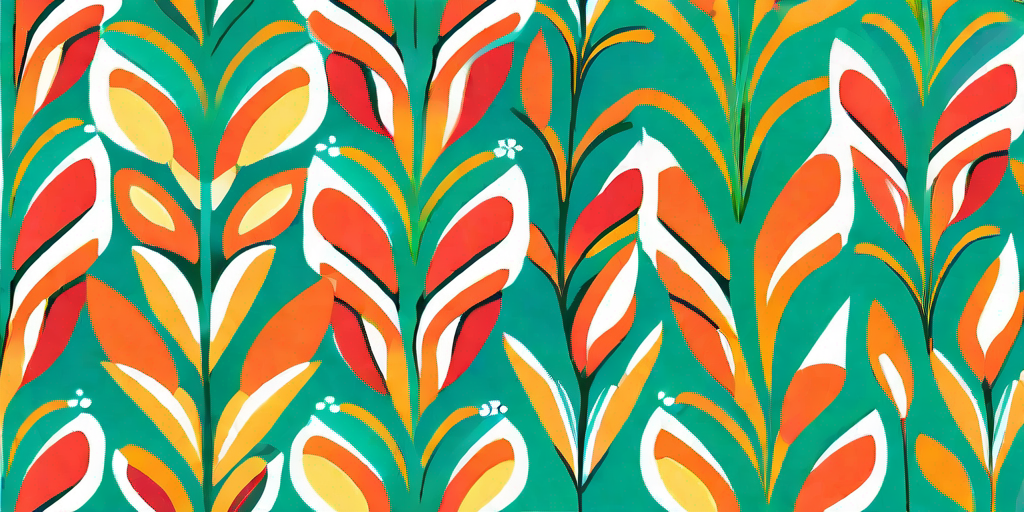
In the vast world of gardening, there are hidden gems that often go unnoticed. One such gem is the Corn Cockle, a flower that is as beautiful as it is unique. With its vibrant pink petals and its tall, slender stem, the Corn Cockle is a sight to behold. But its beauty is not just skin deep. This flower has a lot to offer, and we're here to uncover all its secrets.
The Intriguing History of the Corn Cockle
Before we delve into the nitty-gritty of how to grow and care for the Corn Cockle, let's take a moment to appreciate its rich history. The Corn Cockle, also known as Agrostemma githago, is a wildflower native to Europe. It was once a common sight in wheat fields, hence its name 'Corn' Cockle.
However, with the advent of modern farming techniques, this flower has become rarer in its native habitats. But fear not, for the Corn Cockle has found a new home in gardens around the world. Its striking appearance and easy-to-grow nature have made it a favorite among gardeners and flower enthusiasts alike.
The Symbolism of the Corn Cockle
Like many flowers, the Corn Cockle carries a symbolic meaning. In the language of flowers, it represents love and protection. This is due to its hardy nature and ability to thrive in harsh conditions. So, if you're looking for a flower that symbolizes strength and resilience, the Corn Cockle is a perfect choice.
Now that we've covered the history and symbolism of the Corn Cockle, let's move on to the fun part: growing and caring for this beautiful flower.
How to Grow and Care for Corn Cockle
Growing Corn Cockle is a breeze. This flower is not picky about soil conditions and can thrive in both full sun and partial shade. However, there are a few tips and tricks that can help you grow a healthy and vibrant Corn Cockle.
Firstly, Corn Cockle seeds should be sown in late spring or early summer. The seeds need to be lightly covered with soil and watered regularly. Once the seedlings have sprouted, they should be thinned out to about 12 inches apart. This gives each plant enough space to grow and flourish.
Watering and Fertilizing
When it comes to watering, the Corn Cockle prefers a 'less is more' approach. This flower is drought-tolerant and can survive with minimal watering. However, during the hot summer months, it's a good idea to water your Corn Cockle regularly to keep it hydrated.
As for fertilizing, a light application of a balanced fertilizer in the spring should do the trick. Remember, over-fertilizing can do more harm than good. So, keep it light and your Corn Cockle will thank you.
Pruning and Pests
Pruning is not necessary for the Corn Cockle. This flower grows tall and slender, and doesn't require much maintenance. However, if you want to encourage more blooms, you can deadhead the spent flowers.
As for pests, the Corn Cockle is relatively pest-free. However, keep an eye out for aphids and caterpillars, as they can sometimes be attracted to this flower.
Design Ideas for Corn Cockle in Your Garden
Now that you know how to grow and care for the Corn Cockle, let's talk about how to incorporate this flower into your garden design. The Corn Cockle is a versatile flower that can fit into various garden styles.
With its tall, slender stems and vibrant pink flowers, the Corn Cockle can add a pop of color to any garden. It can be planted in groups to create a stunning floral display, or it can be used as a border plant to add height and structure to your garden.
Pairing with Other Flowers
The Corn Cockle pairs well with other wildflowers, such as poppies and cornflowers. The contrasting colors and textures can create a visually stunning display. Alternatively, you can pair the Corn Cockle with grasses for a more natural and wild look.
Another great pairing is with roses. The delicate pink flowers of the Corn Cockle complement the bold and vibrant roses, creating a romantic and whimsical garden scene.
Frequently Asked Questions
- Is Corn Cockle poisonous?
Yes, all parts of the Corn Cockle plant are poisonous if ingested. Therefore, it's best to keep it out of reach of children and pets. - Can Corn Cockle grow in pots?
Yes, Corn Cockle can be grown in pots. However, due to its tall growth habit, it's best to choose a deep pot to accommodate the long roots. - Does Corn Cockle attract bees?
Yes, the vibrant pink flowers of the Corn Cockle are known to attract bees and other pollinators, making it a great addition to a pollinator-friendly garden.
So there you have it, the hidden beauty of the Corn Cockle revealed. With its vibrant flowers, easy-to-grow nature, and rich history, this flower is truly a floral delight for any garden. So why not give it a try? Your garden will thank you!















